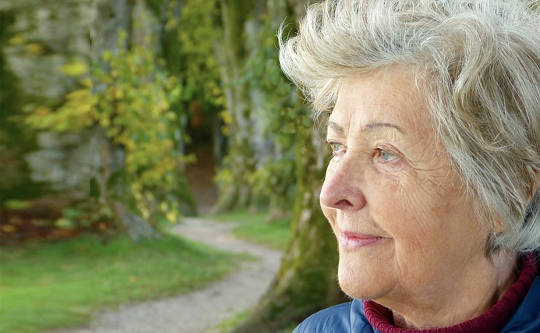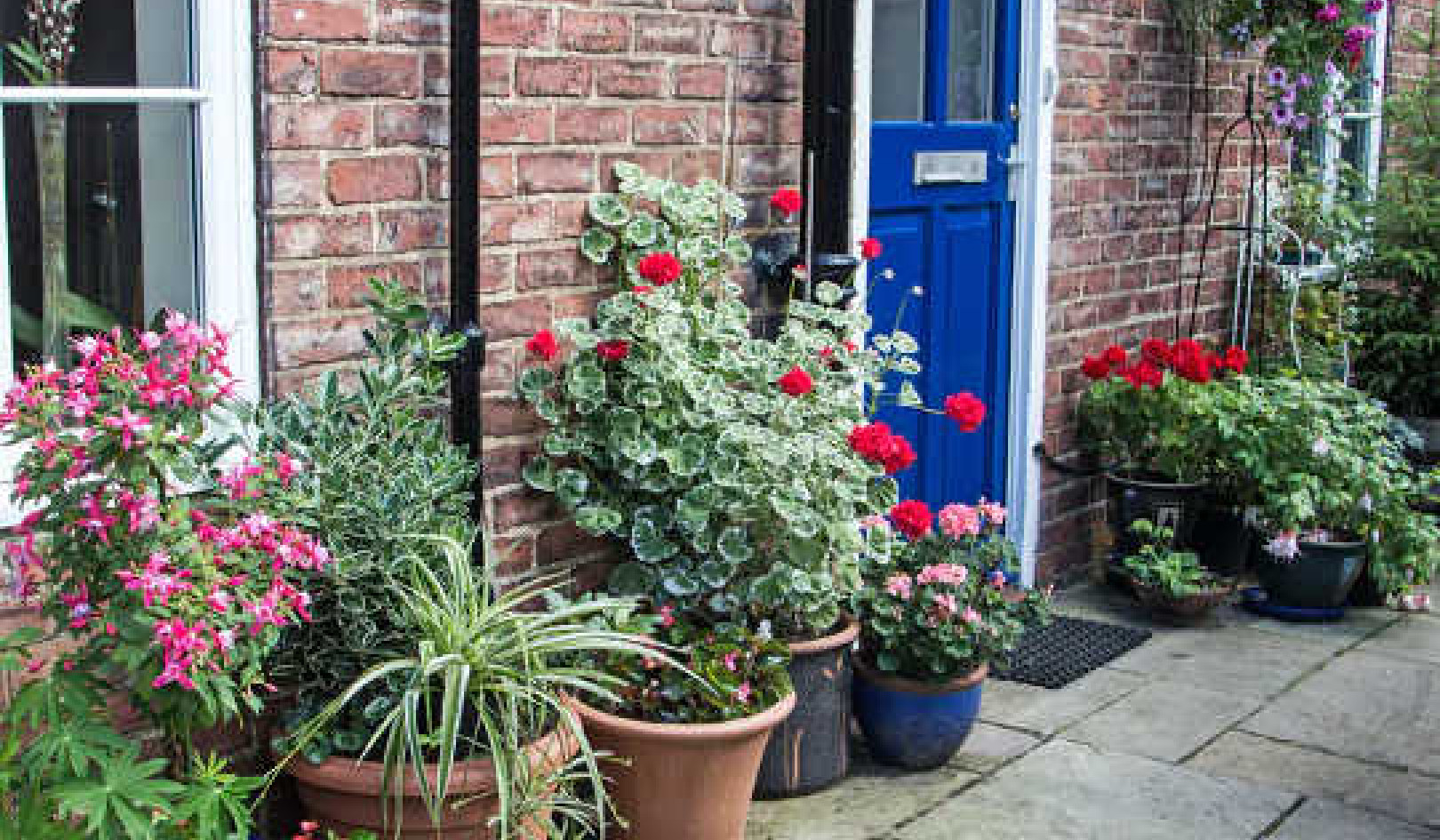
"I'm just warning you, the only way I am leaving this house is horizontally."
My new 92-year-old, 95-pound patient stood guarding her front doorway with her walker. I had just introduced myself as the occupational therapist from the agency assigned to her case. Josie was angry at her kids for insisting she have home care after her hospitalization for a hip fracture that resulted from a fall.
“I don’t blame you,” I said. “This is a great house. How long have you lived here?”
Her demeanor softened a bit and she allowed me through the entrance. “My husband built it over sixty years ago. The children were born and raised here. John died three years ago and I’ve managed just fine since then.”
“So what happened?”
“I had a little fall in the bathroom. To tell you the truth I don’t remember what happened. One minute I was up and the next I was down. The kids are mad that I didn’t press the Lifeline, but it was very late and I didn’t want to bother anyone. So I lay there all night. My daughter found me in the morning. Now they are throwing ideas around about assisted living or me going to live with one of them. Over my dead body!”
After more than thirty-seven years working in the field of geriatrics, thirteen of them in direct home care, I have experienced hundreds of versions of that conversation. The actors are different; the script is the same. Mom and/or dad have lived in their home for a long time. They are starting to have difficulty getting around and managing the daily requirements of maintaining a house.
The decline is often so slow that every minuscule loss of function just becomes the new norm, and they adapt well enough so it doesn’t cause a problem. That is until a fall or a new health issue sends them spiraling and exacerbates their functional losses, and before anyone knows what hit them they have a crisis on their hands.
That’s when I get the frantic phone call.
“My mom is recovering from pneumonia and is so weak she can’t get off the toilet. What do I do?”
“Dad was outside doing yard work and the neighbor called to tell me he had trouble getting up his front steps. What do I do?”
“Mom fell getting out of the tub and was sprawled out on the floor all night with what ended up to be a hip fracture. My sister flew in and is staying with her until she heals, but we are not sure she can stay home alone anymore. I am about to go on a two-month sabbatical to Japan. What should we do?”
“My dad’s dementia has gotten so bad he doesn’t recognize any of his kids or grandchildren. He knows my mother is someone special to him but he does not know she is his wife. He needs twenty-four-hour supervision and we are afraid Mom will burn out. She insists on keeping him home, and all three of us kids live out of state with families and jobs. What do we do?”
“Our parents are driving us crazy. Mom is literally teetering around the house with her cane trying to cook and clean, and we know she is stiff and in pain from her arthritis. Dad can barely get up from his favorite chair where he sits all day watching TV. His drastic loss of hearing hinders his conversations with Mom and he often yells at her out of frustration. They are both an accident waiting to happen. What do we do?”
The answer to “What do we do?”
When the issue of “How safe is mom or dad?” and “Can they stay in their home?” arises, it often causes a conflict between the kids and the parents. It’s natural to view the situation through our own lens, thus creating different and sometimes clashing versions of the same reality.
The answer to “what do we do” requires that everyone tries to see the situation through their loved ones’ eyes, with respect, and that everyone gives a little.
My experience reveals that most of the time the parents are not being purposefully argumentative. We often picture ourselves as the same as when we were young, ignoring signs of aging that have become part of our everyday life. We discount that pain in our backs when we lift something heavy or the twinge in our knee when we go up the stairs. We overlook the fact that our energy level isn’t the same as it used to be and continue to plow on through our day. It’s the same with mom and dad, who likely are at least twenty years older than “us kids.” The years have taken a toll on their physical and cognitive abilities, but if it’s come on slowly they probably didn’t notice it happening.
As much as you are sure they are not totally safe and they are having difficulty getting around the house and managing, mom and dad are thoroughly convinced they are fine. And as much as you plead and cajole them to make some changes, in the end it is their right to dismiss your suggestions, recommendations, pleadings, and threats.
So how do you resolve this conflict?
The answer is to somehow meet in the middle. Make a deal. Get them to agree to modify their surroundings so they can stay home, but in a living environment that is more accessible, safer, and easier to successfully navigate, reducing everyone’s stress level and hopefully leading to a resolution that makes everyone happy.
Remember, your parents are grown-ups and have managed to do a pretty good job progressing to where they are today. They deserve independence, autonomy, and respect. And they, in turn, need to be open to suggestions that will improve chances for preventing falls and promoting safer mobility in and out of their home. Everyone has to give a little.
AARP (American Association of Retired Persons) states that “more than 90% of seniors prefer to age in place; staying in their own homes, continuing to make independent choices and maintaining control over their lives.” That said, many of the people in this age group that I have worked with over the years are reluctant to admit that living in their home has become increasingly difficult. Most often they will not initiate any significant life changes, so it will be up to those who care for them and provide support to get the ball rolling.
An orderly and well-maintained house is a safe house. To maximize health and safety, it is helpful to start with decluttering. Clutter takes up precious space and can actually be hazardous to your parents’ health. It accumulates excess dust and makes it harder to move around the house safely. And the disorganization contributes to stress by making us feel out of control.
Occupational therapists (lovingly called “OTs” for short) are experts in studying the ease and safety in which their patients perform self-care activities. These activities are called “activities of daily living” (ADLs) or “instrumental activities of daily living” (IADLs). ADLs and IADLs are anything people do from the minute they wake up in the morning until they go to bed at night. This includes feeding oneself, dressing, bathing, toileting, grooming, hygiene, and functional mobility (walking and transferring from surface to surface). IADLs are a bit more complicated in that they include making meals, shopping, managing medications and transportation, and managing the home.
Adapting to the challenges
Many seniors desire to remain in their homes where they raised their families and created so many wonderful memories, but those desires are often derailed by declining physical and cognitive abilities. As we age we must adapt to the challenges of performing the activities of daily living that we used to take for granted, such as climbing stairs, bathing, preparing meals, and managing the house. Intellectually, we know that being proactive and planning ahead is the way to achieve the best possible results.
Even with the best of intentions, we are often unsure how to start the process, which results in the situation managing us instead of the other way around. I often hear the analogy when dealing with senior parents that now “we” have become the parents and they have become the “kids.”
Sometimes we lose sight of the impact our parents have had on our entire life. We may have taught them how to use a smartphone or Skype with their grandchildren, but let’s not forget that they taught us hygiene, manners, and basic life skills.
Remember that your best chance for success is to work cooperatively with mom and dad, not to lose your patience, and to always treat them with the respect they deserve. It’s a win-win. They’ll be safe. You’ll be sane.
©2018 by Lynda G. Shrager. All Rights Reserved.
Reprinted with permission.
Published by Bull Publishing. www.bullpub.com
Article Source
Age in Place: A Guide to Modifying, Organizing and Decluttering Mom and Dad's Home
by Lynda Shrager OTR MSW
 Age in Place: A Guide to Modifying, Organizing, and Decluttering Mom and Dad’s Home is a step-by-step, room-by-room guide to simple and often immediate modifications that can help seniors make their homes safer and easier to navigate. It is designed to help seniors and their caregivers address these new challenges together, to make life at home safer and more manageable.
Age in Place: A Guide to Modifying, Organizing, and Decluttering Mom and Dad’s Home is a step-by-step, room-by-room guide to simple and often immediate modifications that can help seniors make their homes safer and easier to navigate. It is designed to help seniors and their caregivers address these new challenges together, to make life at home safer and more manageable.
Click here for more info and/or to order this book or purchase the Kindle version.
About the Author
 Lynda Shrager, OTR, MSW, CAPS is a registered, national board certified occupational therapist, a master’s level social worker and a Certified Aging in Place Specialist (CAPS) with more than thirty-seven years’ experience in the field of geriatrics and more than thirteen years working with seniors in their homes. In 2009 Lynda became a featured columnist for Everyday Health (everydayhealth.com), one of the country’s leading online consumer health web sites. Lynda combines her expertise as an occupational therapist, master’s level social worker, professional organizer and certified aging in place specialist to pursue her passion of providing therapeutic care in the patient’s home environment and in educating their caregivers. Learn more at otherwisehealthy.com.
Lynda Shrager, OTR, MSW, CAPS is a registered, national board certified occupational therapist, a master’s level social worker and a Certified Aging in Place Specialist (CAPS) with more than thirty-seven years’ experience in the field of geriatrics and more than thirteen years working with seniors in their homes. In 2009 Lynda became a featured columnist for Everyday Health (everydayhealth.com), one of the country’s leading online consumer health web sites. Lynda combines her expertise as an occupational therapist, master’s level social worker, professional organizer and certified aging in place specialist to pursue her passion of providing therapeutic care in the patient’s home environment and in educating their caregivers. Learn more at otherwisehealthy.com.
Related Books
at InnerSelf Market and Amazon


























